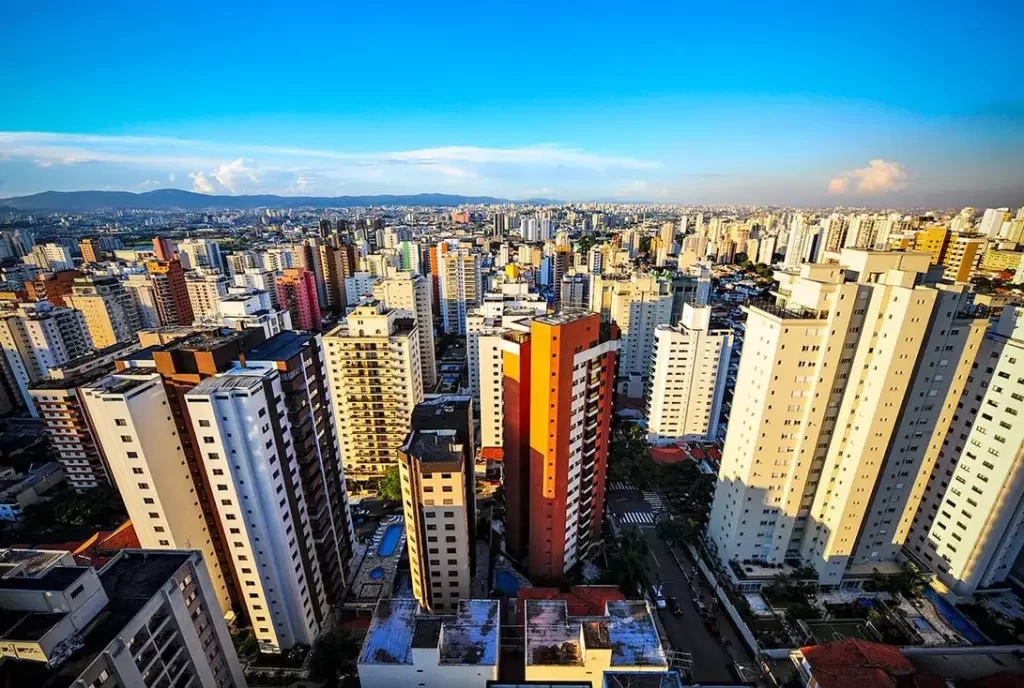Among 12 of the most populated cities in Latin America, Brazil has the cities with the cheapest rents and sales prices, according to the survey “The residential market in Latin America,” released by QuintoAndar on Thursday, September 29.
The survey was done with data from ads on digital platforms from August 2021 to July 2022 and investigated São Paulo, Rio de Janeiro, Brasilia, Salvador, Belo Horizonte, Curitiba, Porto Alegre, Lima (Peru), Mexico City (Mexico), Buenos Aires (Argentina), Quito (Ecuador), and Panama City (Panama).
Among the surveyed locations, Buenos Aires is the most expensive city to buy or rent a property. For purchase, the square meter in the Argentine capital costs, on average, US$2,400. Mexico City (US$2,200) and Panama City (US$2,100) complete the podium.

Brasilia has the most expensive square meter in Brazil, at US$ 1,800. Next come Rio de Janeiro (US$1,784) and São Paulo (US$1,725).
As for rents, the price per square meter in the Argentine capital is US$11.8. To put this into context: a 50-meter apartment costs, on average, US$590 per month.
Mexico City comes next, with US$10.7, and Panama City, with US$10.5.
When it comes to rents, Brazilian cities are a little higher in the ranking. São Paulo, for example, has the fourth-most expensive rent (US$8.6), above Lima (US$8.4), Quito (US$5.7), and Brasilia (US$ 6.9).
According to QuintoAndar’s economist Vinicius Oike, the real estate market has grown on the continent, except for Argentina.
The country suffers from high inflation, economic recession, and an increasingly dollarized economy (transactions have used more dollars and fewer pesos, Argentina’s official currency). In addition, the supply of houses and apartments is greater than the demand for them.
Specifically in Brazil, the increase in credit (either via loans or programs such as Minha Casa, Minha Vida, and Casa Verde Amarela) and a low real price increase (discounting inflation) in the last decade boosted the sector, the survey shows.
PRICE WEIGHS ON THE POCKET
Despite a heating up of this market, housing still presents a high level of income commitment in the analyzed cities. It means that the weight in the pockets of individuals and families is quite large – in some cases, higher than the 30% recommendation.
Of the 12 cities, only in 3, it is possible to spend less than a third of the monthly income on rent. They are Curitiba, Porto Alegre, and Rio de Janeiro.
For buying, the situation is even more difficult.
To measure the weight of the price of real estate for families, the survey calculated how many years this family would need to work to buy a house or an apartment in each city.
The calculation considers the average real estate price and these people’s annual income.
In 11 of the 12 cities, the level obtained was considered alarming: it takes more than 7 to 10 years of work for families to realize the dream of home ownership.
The fact that most cities present this difficulty shows that access to housing is still a problem to be fought in the region.
“The commitment values for the purchase are similar and indicate low affordability. On the other hand, rental values point to a formal market detached from the average family income.
“In the case of Mexico City, there is an expressive slice of the market that serves foreigners, who typically have much higher incomes than the average local family,” explains the economist.
The prices used in the survey result from conversion to dollars in purchasing power parity, which “adjusts the different exchange rates to domestic fluctuations in the price level and allows an adequate comparison of the cost of living,” explains the company.
With information from G1

